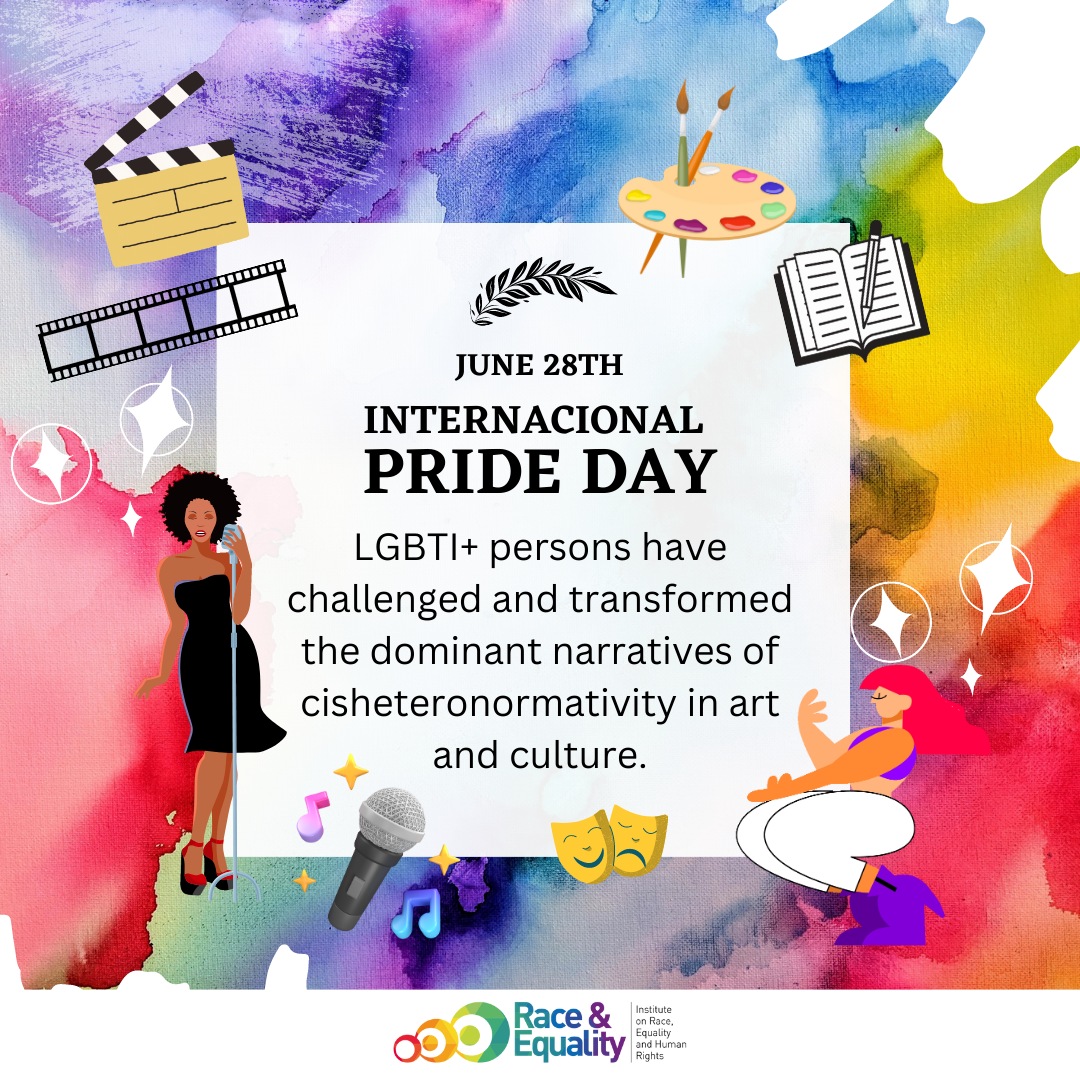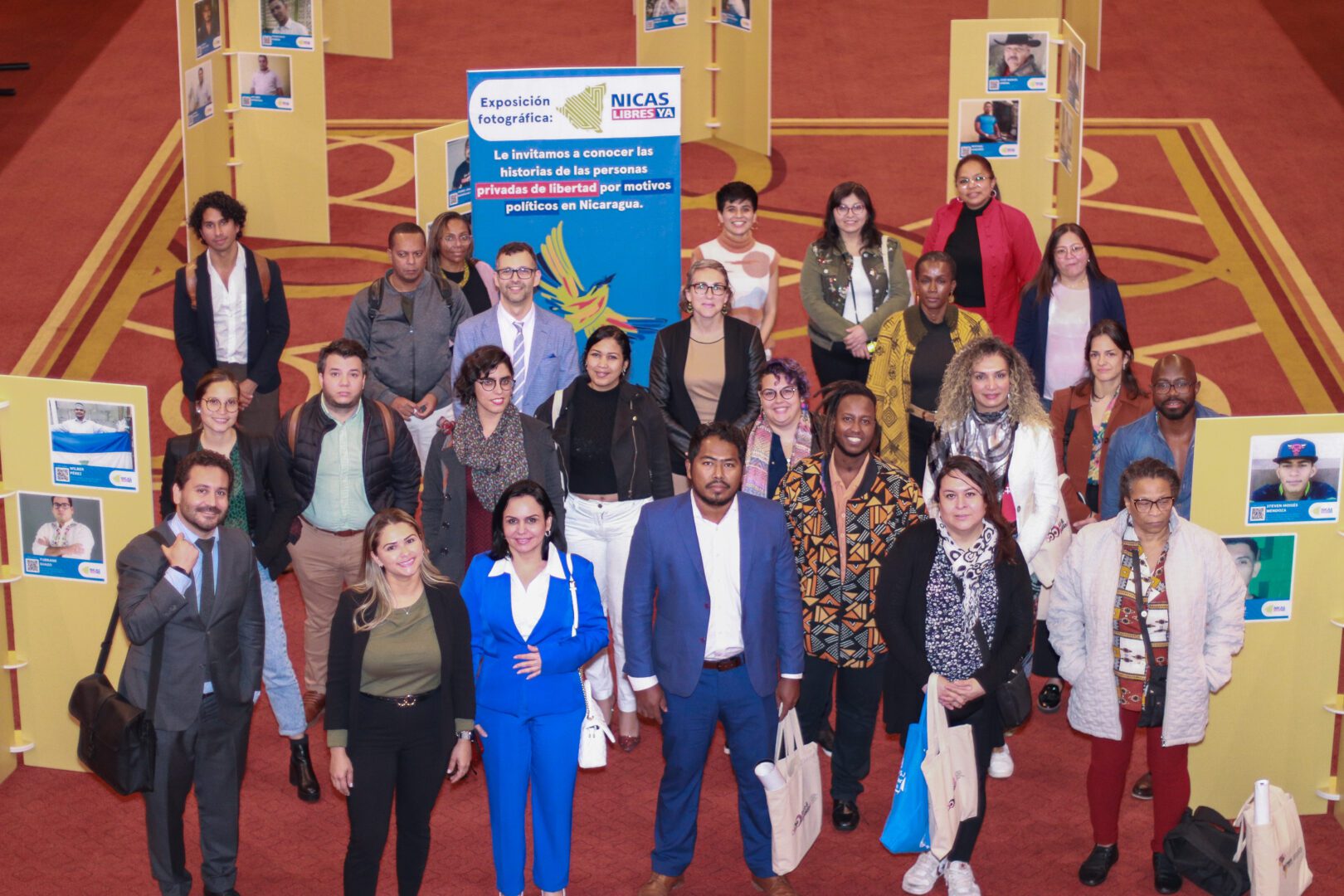Transcendent Voices: Art and Culture as Forms of Resistance and Pride
Washington D.C., June 28, 2023 – On International LGBTI+ Pride Day, the International Institute on Race, Equality and Human Rights (Race and Equality) wishes to dedicate this article to recognize, […]

Washington D.C., June 28, 2023 – On International LGBTI+ Pride Day, the International Institute on Race, Equality and Human Rights (Race and Equality) wishes to dedicate this article to recognize, celebrate, and highlight the presence of LGBTI+ persons in the region in the field of art and culture, which have always been forms of resistance, survival, and pride for LGBTI+ persons. Their disruptive forms of artistic expression have revolutionized this sector, not only enriching it but also challenging and transforming the dominant narratives of cisheteronormativity.
From a human rights perspective, the A/HRC/14/36 report by the United Nations Special Rapporteur on Cultural Rights states that cultural rights are essential for the recognition and respect of human dignity in many aspects. Through these rights, the development and expression of diverse worldviews – both individual and collective – are protected, encompassing important freedoms related to issues of identity.[1]
In this sense, the representation and dignified visibility of historically marginalized groups, such as the LGBTI+ population, are crucial to reclaim their bodies and identities and promote their human rights. “Combat stigma and discrimination. Positive representation in culture contributes to challenging the negative stereotypes and prejudices surrounding sexual and gender diversity,” mentions Alex Aguirre, Human Rights Researcher at the Institute for Peace and Development (Ipades) in Nicaragua, who points out that this also applies to oneself when characters and narratives reflect personal experiences that contribute to developing greater confidence and accepting one’s gender identity or sexual orientation without shame or guilt.
“Diverse artistic expression makes things visible, exposes, portrays, and enriches. Being able to enjoy art created by sexual and gender diverse individuals provides a different perspective to the audience, humanizing and making their expressions their own,” says Fhran Medina, lawyer and LGBTI+ rights activist from Fraternidad Trans Masculina Perú.
From the perspective of the meaning of art and culture, Guillermo Valdizán states in his book Creación Heroica that “forms of cultural production are intimately linked to processes of social transformation.”[2] In other words, cultural production does not exist outside of a specific social, political, and economic context and has been present throughout the history of societies; therefore, it is part of the social process and not just a tool. As Sol Ámbar Sánchez Latorre, Advocacy Director at the GAAT Foundation in Colombia, says, there is an appropriation of the more visible cultural sphere by LGBTI+ persons, which produces new representations and reflections on sexuality and gender, fostering cultural transformations.
Next, Race and Equality’s counterparts recommend some notable examples of cultural productions that have contributed to the visibility of LGBTI+ people:
Yunior Pino, Cuban photographer and activist: “We are courageous individuals endowed with talents and gifts; we educate to eradicate the taboos that have caused a lot of harm and discrimination for generations. I recommend the Cuban film titled Fátima because it portrays the harsh reality experienced by the majority of the LGBTI+ community in Cuba, facing a macho and discriminatory society and a system that forces family separation and prostitution.”
Sol Ámbar Sánchez Latorre, Advocacy Director at the GAAT Foundation in Colombia: “I would like the work of Kia sonorica, a Paraguayan trans artist, to be more widely known. She is also an anti-colonial historian and has a deep understanding of art history; and now she is one of the pioneering Latin American artists using artificial intelligence to create artistic works.”
Fhran Medina, Peruvian lawyer and activist: “Antay is my favorite Peruvian singer-songwriter, not only because he is a great singer, but also because of the work and immense heart he puts into each song and performance. His lyrics are filled with tenderness and artistry. As a trans singer-songwriter, he carries many stories and experiences of the trans population. The music video for the song “Júrame” is something that everyone should watch, and you can find more of his productions on Spotify and YouTube.”
Articulación Brasileña de Lésbicas – Rede ABL: “We recommend the work of Bia Ferreira in music because she is a black woman and ‘sapatão’* who brings true ‘gospels’ of liberation in her songs. It is important for other people to know her work because she explains the cause and solutions to various social issues in a didactic way.”
Alex Aguirre, Human Rights Researcher at the Institute for Peace and Development (Ipades) in Nicaragua: “I recommend the artist Ru Paul, an iconic Drag Queen and host of the show RuPaul’s Drag Race. Ru Paul has been an important figure in LGBTI+ culture and has promoted acceptance and celebration of diversity.”
In conclusion, the visibility of LGBTI+ persons in the field of art and culture is a powerful indicator of progress in human rights. Through cinema, music, dance, theater, visual art, and more, a space has been conquered where these transcendent voices can be heard, and their experiences can be authentically represented. Race and Equality reaffirms its commitment to promoting the visibility and representation of LGBTI+ individuals in all areas of life and wishes them a Pride Month filled with music, art, and culture. All people deserve to live in a society free of violence, more just, and without discrimination. Human rights always!
*’Sapatão’ is a word of pride that refers to lesbian women in Brazil. It is similar to how the trans movement has embraced the word ‘travesti’.
——–
[1] Report of the independent expert in the field of cultural rights, Ms. Farida Shaheed, submitted pursuant to resolution 10/23 of the Human Rights Council. Available at https://documents-dds-ny.un.org/doc/UNDOC/GEN/G10/124/40/PDF/G1012440.pdf?OpenElement
[2] Valdizán, Guillermo (2021). Creación Heroica: Neoliberalismo, políticas culturales y estrategia comunitaria en el Perú del siglo XXI. Lima: RGC Ediciones

